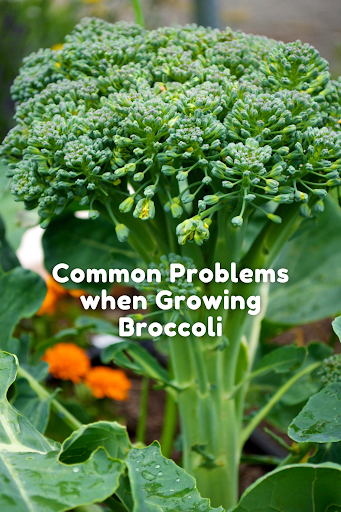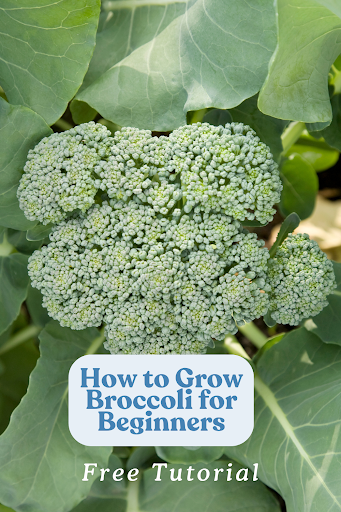If you’ve ever tasted fresh, homegrown broccoli, you know there’s no comparison to the bland, store-bought version. Packed with flavor, nutrients, and a satisfying crunch, broccoli is one of the best cool-season crops for home gardeners. But if you’ve struggled with tiny heads, bitter flavors, or pest problems, don’t worry—you’re not alone!
Learning how to grow broccoli successfully takes a bit of know-how, but with the right timing, soil preparation, and care, you’ll be harvesting big, beautiful heads in no time. Whether you’re a beginner or an experienced gardener, this guide will walk you through everything you need to know to grow your best broccoli crop yet.
Welcome to Grace Walk Farm, our family homestead in western NC. We share the highs and lows of our homestead journey, in hopes that it will encourage you to grow your own food too. Click here to grab our Beginner Garden Guide for free! Join our 600K strong Instagram community of homesteaders here. Thanks for stopping by!
Broccoli Planting Guidelines
Choose the right broccoli variety: There are several types of broccoli to choose from, including standard green broccoli, purple broccoli, and broccolini. Choose a variety that is suited to your climate and growing conditions.
Prepare the soil: Broccoli prefers a well-draining, nutrient-rich soil with a pH between 6.0 and 7.0. Work in compost or aged manure to improve the soil’s fertility, and loosen the soil to a depth of at least 12 inches.
Start Broccoli seeds indoors: Broccoli can be started from seed indoors 6-8 weeks before the last expected frost date. Sow seeds 1⁄4 inch deep in small pots, and keep them in a warm, sunny location until they germinate.
Transplant seedlings: Once the seedlings have grown to about 4-6 inches tall, transplant them outdoors to a prepared garden bed. Space them 18-24 inches apart in rows that are 24- 36 inches apart.
Water and fertilize: Water your broccoli plants regularly to keep the soil evenly moist. Fertilize with a balanced fertilizer every 3-4 weeks.
Protect from pests and diseases: Cover your broccoli plants with row covers to protect them from pests such as aphids, cabbage worms, and flea beetles. Remove the covers once the plants begin to flower to allow for pollination.

Common Problems When Growing Broccoli
Pests: Broccoli is vulnerable to several pests, including aphids, cabbage worms, and flea beetles. To prevent these pests, cover your plants with row covers and remove them once the plants begin to flower. You can also use natural pest control methods such as neem oil, insecticidal soap, or introducing beneficial insects such as ladybugs and lacewings.
Disease: Broccoli can be susceptible to several diseases, including clubroot and blackleg. To prevent these diseases, rotate your crops to a new area each year and avoid planting in soil where other brassica crops have grown. You can also use disease-resistant varieties and keep your plants well-watered to prevent stress.
Bolting: Broccoli can bolt or go to seed if it is exposed to high temperatures for too long. To prevent this, plant broccoli in a location that gets some shade during the hottest part of the day and keep the soil evenly moist.
Nutrient deficiencies: Broccoli can be susceptible to nutrient deficiencies, particularly if the soil is not well-draining or if there is not enough nitrogen in the soil. To prevent this, add compost or aged manure to the soil before planting and fertilize regularly with a balanced fertilizer.
Companion Planting with Broccoli
Beets: Beets are a great companion for broccoli because they help repel pests such as aphids and leaf miners.
Chamomile: Chamomile is a natural insect repellent and can help deter pests from your broccoli plants. It also improves soil fertility and can be used as a natural mulch.
Dill: Dill attracts beneficial insects such as ladybugs, which can help control pests that might attack your broccoli plants.
Spinach: Spinach is a good companion for broccoli because it provides shade to the soil, which helps keep it cool and moist.
Nasturtium: Nasturtiums are a great companion for broccoli because they repel pests such as aphids and cabbage worms. They also attract beneficial insects and add color to your garden.
Marigolds: Marigolds are a natural pest repellent and can help protect your broccoli plants from pests such as nematodes.
Best Broccoli Varieties for Beginner Gardeners
Calabrese: This is one of the most popular varieties of broccoli, and it’s a good choice for beginners. It produces a large central head and also produces side shoots, so you can get multiple harvests from a single plant.
De Cicco: This variety of broccoli is known for its early maturity and reliable yields. It produces multiple small heads rather than a single large head, making it a good choice for smaller gardens or containers.
Waltham 29: This variety of broccoli is a good choice for cooler climates and is resistant to cold temperatures. It produces a large central head and also produces side shoots.
Green Goliath: This is a hybrid variety of broccoli that is known for its large, dense heads and high yields. It’s a good choice for gardeners who want to get the most out of their plants.
Grow Good Broccoli in Your Garden
Now that you know how to grow broccoli, you’re ready to enjoy one of the most rewarding crops in your garden. With proper planting, regular watering, and a little pest prevention, you’ll soon be harvesting fresh, nutrient-packed broccoli right from your backyard. Whether you steam it, roast it, or enjoy it raw, nothing beats the taste of homegrown produce. So grab your seeds, get your garden beds ready, and start growing your best broccoli yet! Happy gardening!
Also check out these blogs:




